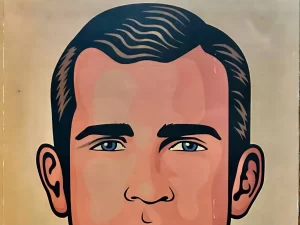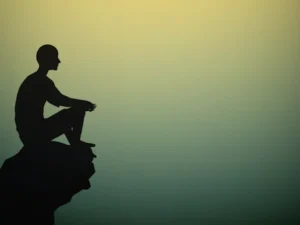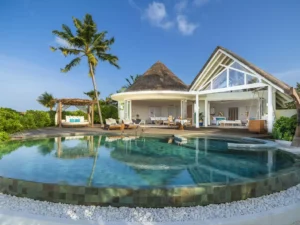Beautiful, Vibrant and Thrilling: Is African Art and Its Ever Rapidly Evolving Market
The contemporary African art scene has boomed in the last five years proving its infinite potential. As the Head of Modern & Contemporary African Art at Sotheby’s Hannah O’Leary put it in a Sotheby’s talk this past October, in collaboration with Phaidon’s new publication African Artists from 1882 to Now; “Africa represents one in five people on this planet and a much wider diaspora beyond that. That’s a huge amount of buying power, collecting power and artistic power. It’s the fastest growing continent on the planet, the youngest continent on the planet”. With a wealth creation that is growing rapidly, the continent represents twenty percent of the earth’s population and one to two percent of the art market — “The potential there is huge […] when we talk about buyer potential in Africa, there shouldn’t be any doubts”.
African art from the continent and its diaspora had long been neglected by the art historical debate. Despite the growing interest and production during the modernist era and independence movements, many publications had marginalized African art altogether, but history has now been challenged. For a long time there were no female artists or non-white artists in “The History of Art”, yet we have recently opened our eyes to the fact that there isn’t just one history of art, but many histories and many cultures in many distinct geographical areas. As South African artist Nicholas Hlobo (b. 1975) said for a CNN interview; “I think we have a wonderful opportunity because the world has started looking towards Africa, before everything was focused towards the Western World and now the curiosity has started shifting to countries that were before, perhaps regarded as inferior, they are [now] gaining acknowledgement”.
A few years ago, the African art market was missing the infrastructure and public support it needed to bolster artists’ careers, but as a large amount of art schools, art fairs, museums and galleries have sprung up all over the African continent dedicated to supporting practitioners and showcasing African art within its borders, as well as collectors who are building important collections of contemporary African works like in the case of Jean Pigozzi, who has been collecting African art for over 30 years; it is only the beginning for the African art market.
I recently had the pleasure to engage in a conversation with Joseph Darko, founder of the Noldor Residency in Accra and the Institute Museum of Ghana, in which he stated that there is a sense of collaboration between museums and artist residencies in order to support practitioners in a meaningful way. Joseph founded Ghana’s first independent artist residency as well as Ghana’s first contemporary art museum during the global pandemic; “the focus is to nurture emerging practitioners of the continent and the diaspora, in a place like Ghana where the arts and culture scene has received a lot of underinvestment and is deeply undercapitalized, it’s good to have a ‘glocal’ meaning ‘locally attuned to globally minded’ group of donors and supporters” he says, “it’s been great to create this artist commune and to nurture creative emerging contemporary artists from Ghana and from Africa”.
Highlighting their debut museum exhibition artist Mimi Adu-Swerwaah (Ghana, b.1994) who will be the first female artist in the Institute Museum of Ghana’s history to debut a solo exhibition and artist Kwaku Owusu Achim (b. 1991) who will be part of the group exhibition titled Contemporary Painting at Brick Lane gallery in London this coming January 2022. Another compelling practitioner from the Noldor Residency is Kwabena Lartey (b. 1995) who explores the sense of loss and reduced identity in people of color. With a unique mixed medium, his work focuses on the connection between the identities of black bodies and the effects of injustice in Western Africa and the United States. “They are all distinct fellows who speak to the moment that Ghana is having” says Joseph Darko.

Gallery 1957 in Ghana, Addis fine art in Ethiopia, Dak’art (also known as the Dakar Biennale), Art X lagos founded in 2015 by Tokini Peterside, the Goodman gallery in South Africa, the
Zeitz MOCAA opening in Cape Town in 2017, the Kampala Art Biennale established in Uganda in 2014, FNB Joburg, MACAAL Museum of African Contemporary Art in Marrakesh and countless others, exemplify that there is a possibility to change the way in which African art is exhibited. All these platforms set out to change the fact that there was little to no infrastructure that would showcase African art within the continent itself.
Strong art schools in museums such as MACAAL or Museum of Black Civilizations in Dakar as well as established artists like Hassan Hajjaj (Morocco b. 1961) and Ibrahim Mahama (Ghana b. 1987) who have built a number of institutions to nurture young talent at home, show that despite the lack of gallery infrastructure and cultural policy, there is a compelling group of artists and professionals committed to the creation of a well thought out, stimulating and exciting cultural landscape across the continent.
“The global discourse on visual art is incomplete without Africa’s perspectives, histories and stories” – Tokini Peterside.
1-54, the world’s leading Contemporary African Art Fair dedicated to African art from the continent and its diaspora, founded by Touria El Glaoui in London, New York, Paris and Marrakesh took place in London this past October hosting a record number of galleries from Africa. Twenty amongst a total of fourty-seven that participated in the art fair were galleries that came from the continent. In addition, partnering with Christie’s to power the online format, meant reaching a much wider audience and hub of collectors despite the global challenges presented by Covid-19.
The unprecedented rate at which the African art market is evolving can be explained not only by the newly-opened museums and art exhibitions displaying contemporary African art all over the world, the interest that the secondary market has taken in African art as well as the drive from patrons and collectors, but also because we now see that many artists throughout history were inspired by African art. There is a heightened sense of awareness entering the global discussion on the importance and significance of African art as an original frame for a lot of
Existing art, with the examples of Picasso being deeply inspired by African masks, or artist Jean-Michel Basquiat who discovered elements of his new form of expressionism when he embarked on a trip to the Ivory Coast, this new and authentic sense of awareness, as Joseph Darko also explains, together with the institutional validation has been very important.


When I set out to write this article I knew little to nothing about art of the African continent, yet the more I looked into it the more I fell in love with it. It is sophisticated, unique, beautiful and vibrant and it tells powerful stories. African artists have a history to share and a story to tell about what it means to be African, their identity and surroundings as well as how they engage with and respond to the rest of the world. Bringing up questions and conversations that are not only to be had within the gallery or museum space but that are worthy of having outward into society.
Most interestingly is artist Ibrahim Mahama’s way of addressing the contradictions in the art market as well as the life cycle of the object that is the artwork. Non-Orientable Nkansa is and installation work that comprises hundreds of shoeshine boxes like those carried by the shoeshine boys in Ghana. The work which was done between 2014 and 2017 is an example of his discourse on the history of industrialization which he, in this case, brings into the object that is the shoeshine box by making them out of the wood and paint that was left in a decaying factory in Tema.
On the other hand, Ibrahim Mahama sets the tone for the conversation of what a regular object such as the shoeshine box can become once it enters the gallery context and even more importantly points out what contemporary art is truly capable of doing in the twenty-first century. When the object is placed in an art gallery making that transition from a mere object to a work of art that has a certain value, therefore transcending into capital, the artist then poses the following question: What is the capital that it now becomes? The capital from his works circles back to Ghana in the form of new conditions and new cultural promises by building his artist-run project space Savannah Centre for Contemporary Art in Tamale (Northern Ghana), followed by the opening of the vast studio complex Red Clay also in Northern Ghana where as many as one hundred to two hundred children come in daily to learn about art while witnessing the birth of an institution and understanding the importance of building these spaces. Where the goal is to build a set of strong institutions that allows their people to have access to art at high levels, the artist also opened a third education space in 2021 in a renovated silo.


“African artists have always produced innovative work, but only recently has it truly been appreciated on the international stage” Rakeb Sile, Addis Fine Art. In the panel discussion that took place at Sotheby’s this past October also mentioned at the beginning of this article, writer and curator Ekow Eshun asked Nigerian artist Sokari Douglas Camp (b.1958), what her take is on how things have changed in the past years in regards to the contemporary African art scene and whether if we were now “in a marked period in time” to which the artist replies; “in my working life I have seen an awful lot of change, we are a commercial asset now, we never were before […] there is just so much to be learned, it’s like discovering a new style of food, there is history and style and invention, [it is] our history that art historians and buyers have to recognize, have to be taught about, just because we are not new, but we are new to this market”.
It is shocking to think that the African art market comprises 54 countries, 1.2 billion people, 1000-2000 languages and countless aesthetic traditions and backgrounds, without taking into account its much wider diaspora. But of course this has not stopped the art world from employing the all-encompassing term “African art”. To the question posed by Ekow Eshun, “is this a useful term today?” artist Ibrahim Mahama replies; “African artists have a really interesting opportunity to be able to reinvent the meaning of art in itself, I see that in a lot of art that is being made now and also the attitude of artists particularly practicing on the continent these days”. He then adds that African countries have always been in crisis and that Africans have always understood so, it’s precisely that attitude which they constantly have embraced and applied through their use of materials and mediums why they are able to make work that is so unique and distinct. “It is important for us to look at individual geographical locations to look at motives and histories, but when it comes to the term African art, for me it’s interesting because there’s a certain heavy sense of responsibility to it and for artists to follow up on […] African art, it’s more like a solidarity and I think [our] future is collective, if we say Ghanaian art or Nigerian art, why not African art? because at the end of the day we bear the same problems, it’s a responsibility, it’s not as if when you go to Malawi they have a different problems […] as cultural practitioners we need to move a step further from just talking about a problem to doing what we can to somehow make new promises to it”. Ibrahim Mahama’s latest solo exhibition titled Lazarus was on view at White Cube Bermondsey in London, until this past 7th November 2021.













